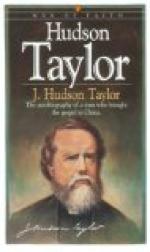Sugar Loaf 785 feet. Dunderberg 865 " Anthony’s Nose 900 " Storm King 1368 " Old Cro’ Nest 1405 " Bull Hill 1425 " South Beacon 1625 "
THE CATSKILLS.
North Mountain 3000 feet. Plaaterkill 3135 " Outlook 3150 " Stoppel Point 3426 " Round Top 3470 " High Peak 3660 " Sugar Loaf 3782 " Plateau 3855 "
=Sources of the Hudson.=—The Hudson rises in the Adirondacks, and is formed by two short branches. The northern branch (17 miles in length), has its source in Indian Pass, at the base of Mount McIntyre; the eastern branch, in a little lake poetically called the “Tear of the Clouds,” 4,321 feet above the sea under the summit of Tahawus, the noblest mountain of the Adirondacks, 5,344 feet in height. About thirty miles below the junction it takes the waters of Boreas River, and in the southern part of Warren County, nine miles east of Lake George, the tribute of the Schroon. About fifteen miles north of Saratoga it receives the waters of the Sacandaga, then the streams of the Battenkill and the Walloomsac; and a short distance above Troy its largest tributary, the Mohawk. The tide rises six inches at Troy and two feet at Albany, and from Troy to New York, a distance of one hundred and fifty miles, the river is navigable by large steamboats.
* * *
Of grottoes in the far dim woods,
Of pools moss-rimmed and deep,
From whose embrace the little rills
In daring venture creep.
E.A. Lente.
* * *
The principal streams which flow into the Hudson between Albany and New York are the Norman’s Kill, on west bank, two miles south of Albany; the Mourdener’s Kill, at Castleton, eight miles below Albany, on the east bank; Coxsackie Creek, on west bank, seventeen miles below Albany; Kinderhook Creek, six miles north of Hudson; Catskill Creek, six miles south of Hudson; Roeliffe Jansen’s Creek, on east bank, seven miles south of Hudson; the Esopus Creek, which empties at Saugerties; the Rondout Creek, at Rondout; the Wappingers, at New Hamburgh; the Fishkill, at Matteawan, opposite Newburgh; the Peekskill Creek, and Croton River. The course of the river is nearly north and south, and drains a comparatively narrow valley.
It is emphatically the “River of the Mountains,” as it rises in the Adirondacks, flows seaward east of the Helderbergs, the Catskills, the Shawangunks, through twenty miles of the Highlands and along the base of the Palisades. More than any other river it preserves the character of its origin, and the following apostrophe from the writer’s poem, “The Hudson,” condenses its continuous “mountain-and-lake-like” quality:




